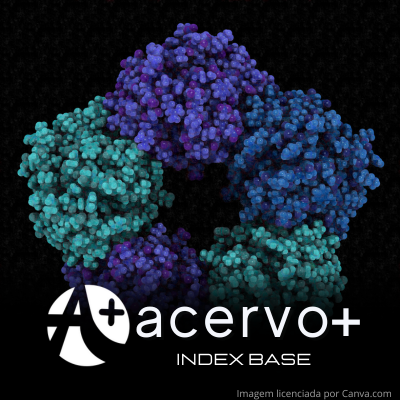O papel dos biomarcadores moleculares no linfoma não Hodgkin
##plugins.themes.bootstrap3.article.main##
Resumo
Objetivo: Realizar a identificação dos biomarcadores moleculares com maior capacidade preditiva para auxiliar no diagnóstico, na definição prognóstica e na avaliação da resposta às terapias individualizadas em indivíduos com linfoma não Hodgkin (LNH). Métodos: Trata-se de uma revisão de literatura, realizada por meio de busca nas bases científicas Pubmed, Scielo e Biblioteca Virtual de Saúde. Foram selecionados 24 estudos publicados, priorizando ensaios clínicos, estudos prospectivos, retrospectivos e multicêntricos, que abordaram biomarcadores moleculares associados aos desfechos clínicos em pacientes com LNH. Resultados: Os estudos analisados destacaram que biomarcadores como TP53, MYC, BCL2, KMT2D, CREBBP, SOCS1, além da análise do DNA tumoral circulante (ctDNA), são fundamentais para estratificação prognóstica e definição de estratégias terapêuticas em LNH. Além disso, a identificação de clusters moleculares (MCD, BN2, EZB, ST2 e N1) e a classificação pela célula de origem (COO) possibilitam uma predição mais precisa dos desfechos clínicos, especialmente em terapias como CAR-T e anticorpos biespecíficos. Considerações finais: Os biomarcadores moleculares otimizam o diagnóstico e o manejo terapêutico dos LNH, porém a heterogeneidade metodológica limita a generalização dos resultados.
##plugins.themes.bootstrap3.article.details##
Copyright © | Todos os direitos reservados.
A revista detém os direitos autorais exclusivos de publicação deste artigo nos termos da lei 9610/98.
Reprodução parcial
É livre o uso de partes do texto, figuras e questionário do artigo, sendo obrigatória a citação dos autores e revista.
Reprodução total
É expressamente proibida, devendo ser autorizada pela revista.
Referências
2. ALCOCEBA MA, et al. Molecular characterization of diffuse large‐B cell lymphoma by liquid biopsy at diagnosis and during follow‐up. Hematological Oncology, 2023; 41: s/p.
3. ALMEIDA AB, et al. Acompanhamento do seguimento terapêutico de pacientes: jornada do paciente com linfoma não hodgkin no Brasil. Hematology, Transfusion and Cell Therapy, 2021; 43: S62.
4. BATLEVI CL, et al. Correlative biomarkers for CART19 response in patients with relapsed or refractory diffuse large B-cell lymphoma. Blood, 2022; 140(Supl. 1): 9228-9230.
5. COOPER AB, et al. CD5 gene signature identifies diffuse large B-cell lymphomas sensitive to Brutonʼs tyrosine kinase inhibition. Journal of Clinical Oncology, 2024; 42(4): 467-480.
6. DUBOIS SD, et al. Next-generation sequencing in diffuse large B-cell lymphoma highlights molecular divergence and therapeutic opportunities: a LYSA study. Clinical Cancer Research, 2016; 22(12): 2919-2928.
7. HILL BT, et al. Impact of molecular features of diffuse large B-cell lymphoma on treatment outcomes with anti-CD19 chimeric antigen receptor (CAR) T-cell therapy. Blood, 2021; 138: 165.
8. IRAOLA-TRUCHUELO JT, et al. Resistance mechanisms impacting bispecific antibody (BsAbs) and chimeric antigen receptor (CAR) T-cell therapy outcomes in large B cell lymphoma (LBCL) patients. Blood, 2023; 142(Supl. 1): 1635.
9. KENDALL EK, et al. Integrative DNA methylation and gene expression analysis reveals candidate biomarkers associated with dichotomized response to chemoimmunotherapy in diffuse large B-cell lymphoma. Blood, 2020; 136: 22.
10. KURTZ DM, et al. Circulating tumor DNA measurements as early outcome predictors in diffuse large B-cell lymphoma. Journal of Clinical Oncology, 2018; 36(28): 2845-2853.
11. KURTZ DM, et al. Development of a dynamic model for personalized risk assessment in large B-cell lymphoma. Blood, 2017; 130(1): s/p.
12. LINO LA, et al. Uso dos biomarcadores na detecção precoce de câncer: uma revisão de literatura. Research, Society and Development, 2024; 13(8): e4013846517.
13. LIU WD, et al. Harnessing ctDNA to predict therapeutic success in DLBCL: insights from a multicenter prospective study. Blood, 2024; 144(Supl. 1): 4347.
14. MARQUES AP, et al. Taxa de sobrevida em pacientes pediátricos com linfoma não-Hodgkin e fatores prognósticos: revisão da literatura. Brazilian Journal of Health Review, 2021; 4(5): 22543-22556.
15. MOIA RD, et al. Molecular clustering on ctDNA may improve prognostic stratification of DLBCL patients. Blood, 2022; 140(Supl. 1): 9226-9227.
16. OLSON NE, et al. Exploration of tumor biopsy gene signatures to understand the role of the tumor microenvironment in outcomes to lisocabtagene maraleucel. Molecular Cancer Therapeutics, 2023; 22(3): 406-418.
17. OMIZZOLO HR, et al. Rosai-Dorfman como diagnóstico diferencial de linfadenomegalia cervical: relato de caso. Brazilian Journal of Health Review, 2021; 4(6): 29350-29353.
18. PEREZ LP, et al. Diffuse large B cell lymphoma genetic classification by targeted sequencing and associations with immunochemotherapy-treated patients' clinical outcome. Blood, 2020; 136: 24-25.
19. QUIVORON CV, et al. High incidence of TP53 and epigenetic modifying oncogenes mutations in a large cohort of patients enrolled in phase 1 clinical trials for relapsed or refractory diffuse large B-cell lymphoma. Blood, 2020; 136: 10-11.
20. RODRÍGUEZ MR, et al. An integrated prognostic model for diffuse large B‐cell lymphoma treated with immunochemotherapy. EJHaem, 2022; 3(3): 722-733.
21. SAUZA-ROLDAN JV, et al. Linfoma primario en intestino delgado: reporte de dos casos y revisión de literatura. Caribe, 2022; 6: s/p.
22. SONG JY, et al. New genomic model integrating clinical factors and gene mutations to predict overall survival in patients with diffuse large B-cell lymphoma treated with R-CHOP. Blood, 2018; 132: 346.
23. SWORDER BJ, et al. Determinants of resistance to engineered T cell therapies targeting CD19 in large B cell lymphomas. Cancer Cell, 2023; 41(1): 210-225.e5.
24. TABARI ES, et al. Molecular characteristics and disease burden metrics determined by next-generation sequencing on circulating tumor DNA correlate with progression free survival in previously untreated diffuse large B-cell lymphoma. Blood, 2019; 134: 490.
25. THAKKAR DE, et al. Molecular and clinical determinants of CAR-T therapy response in DLBCL. Blood, 2024; 144(Supl. 1): 3409.
26. TZANKOV AL, et al. Multiparameter analysis of homogeneously R-CHOP-treated diffuse large B-cell lymphomas identifies CD5 and FOXP1 as relevant prognostic biomarkers: report of the prospective SAKK 38/07 study. Journal of Hematology & Oncology, 2015; 8: 1-11.
27. VALLANIA FR, et al. Identification of predictive biomarkers for response of R/R DLBCL patients treated with loncastuximab tesirine using low pass whole-genome sequencing (WGS). Blood, 2022; 140(Supl. 1): 3551-3552.
28. ZHOU LN, et al. Establish[ment of a dynamic ctDNA monitoring system to predict the prognosis of CAR-T cell therapy in R/R B-NHL patients. Blood, 2023; 142: 2278.

